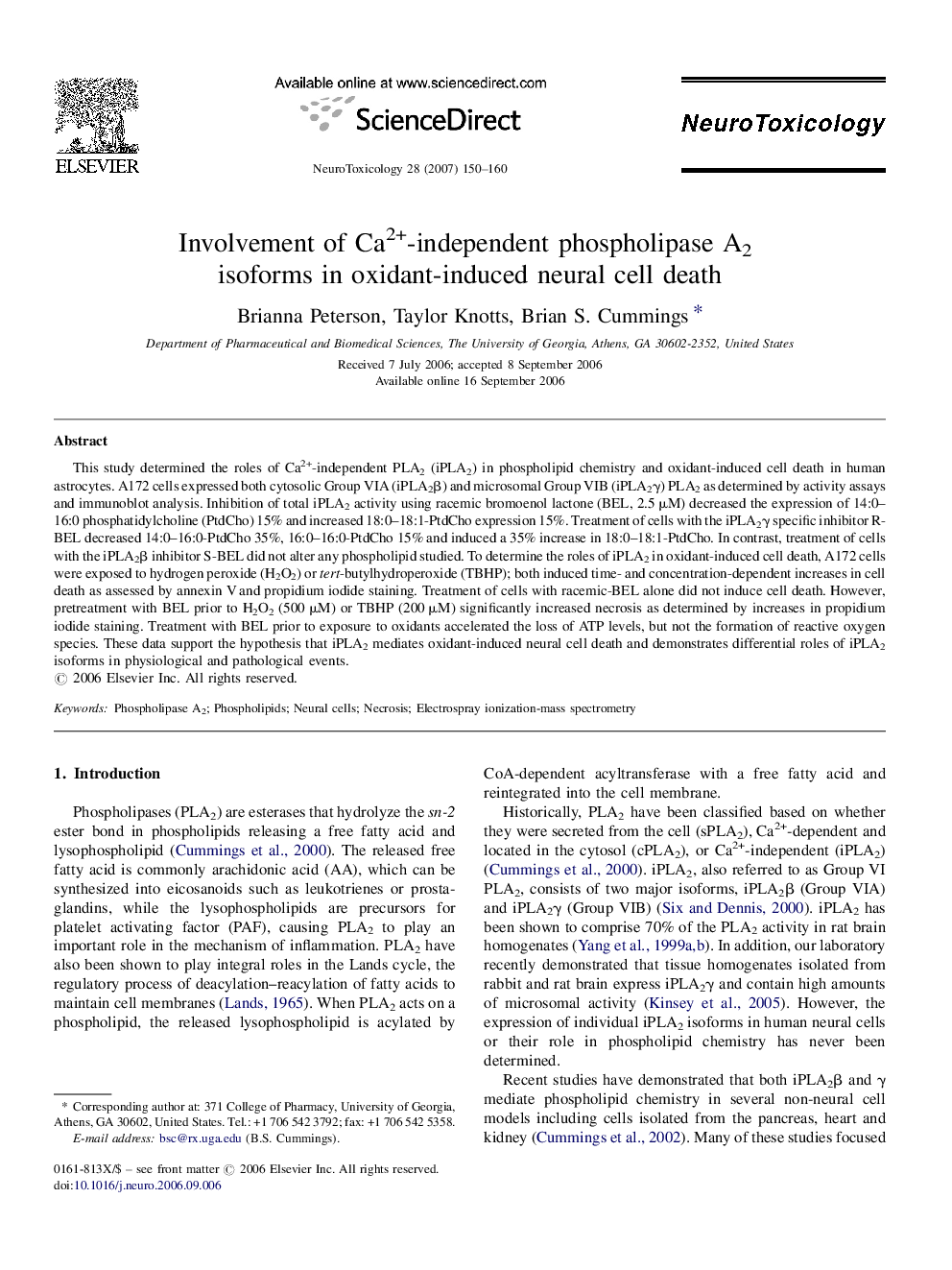| Article ID | Journal | Published Year | Pages | File Type |
|---|---|---|---|---|
| 2590505 | NeuroToxicology | 2007 | 11 Pages |
This study determined the roles of Ca2+-independent PLA2 (iPLA2) in phospholipid chemistry and oxidant-induced cell death in human astrocytes. A172 cells expressed both cytosolic Group VIA (iPLA2β) and microsomal Group VIB (iPLA2γ) PLA2 as determined by activity assays and immunoblot analysis. Inhibition of total iPLA2 activity using racemic bromoenol lactone (BEL, 2.5 μM) decreased the expression of 14:0–16:0 phosphatidylcholine (PtdCho) 15% and increased 18:0–18:1-PtdCho expression 15%. Treatment of cells with the iPLA2γ specific inhibitor R-BEL decreased 14:0–16:0-PtdCho 35%, 16:0–16:0-PtdCho 15% and induced a 35% increase in 18:0–18:1-PtdCho. In contrast, treatment of cells with the iPLA2β inhibitor S-BEL did not alter any phospholipid studied. To determine the roles of iPLA2 in oxidant-induced cell death, A172 cells were exposed to hydrogen peroxide (H2O2) or tert-butylhydroperoxide (TBHP); both induced time- and concentration-dependent increases in cell death as assessed by annexin V and propidium iodide staining. Treatment of cells with racemic-BEL alone did not induce cell death. However, pretreatment with BEL prior to H2O2 (500 μM) or TBHP (200 μM) significantly increased necrosis as determined by increases in propidium iodide staining. Treatment with BEL prior to exposure to oxidants accelerated the loss of ATP levels, but not the formation of reactive oxygen species. These data support the hypothesis that iPLA2 mediates oxidant-induced neural cell death and demonstrates differential roles of iPLA2 isoforms in physiological and pathological events.
